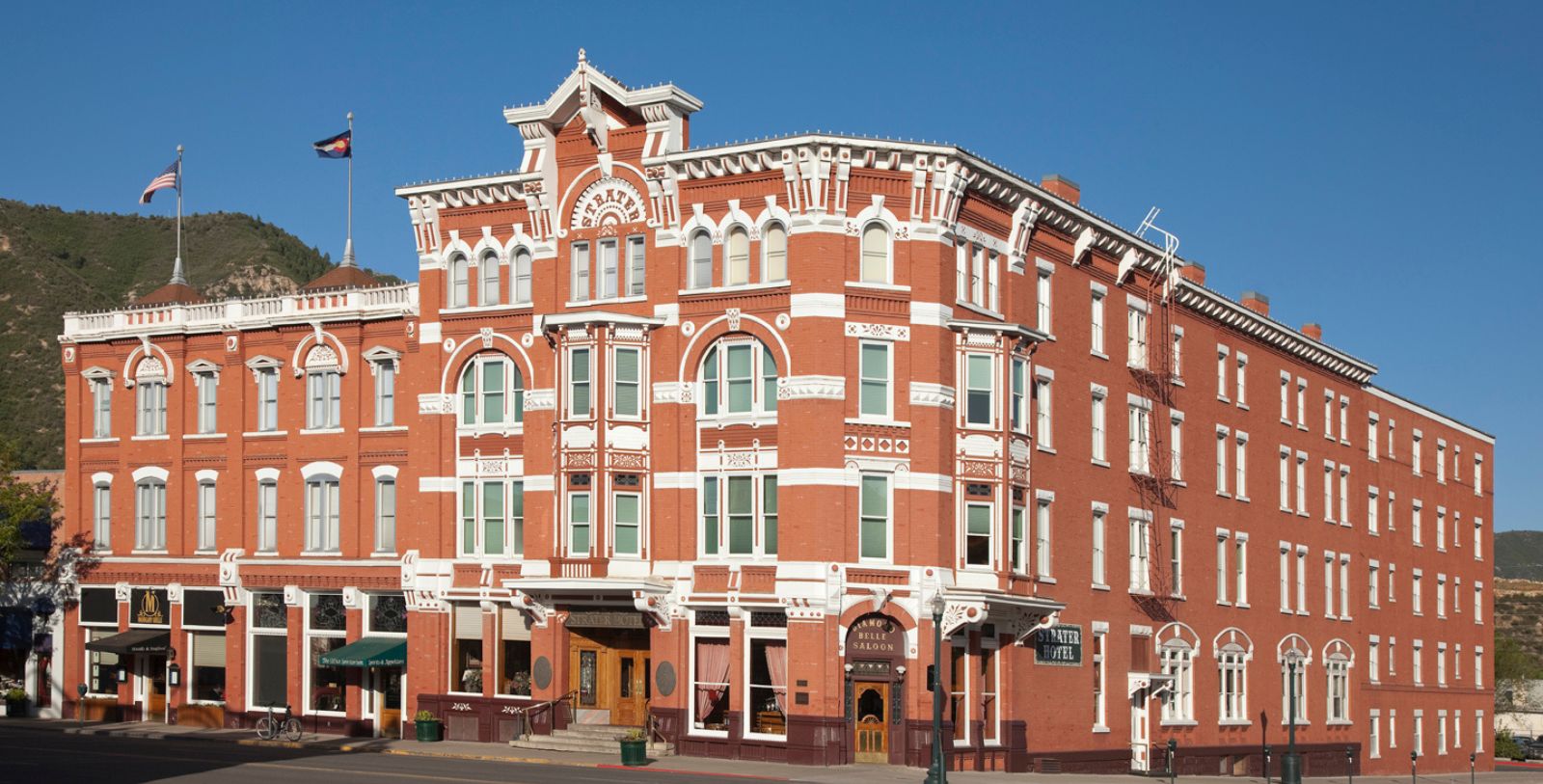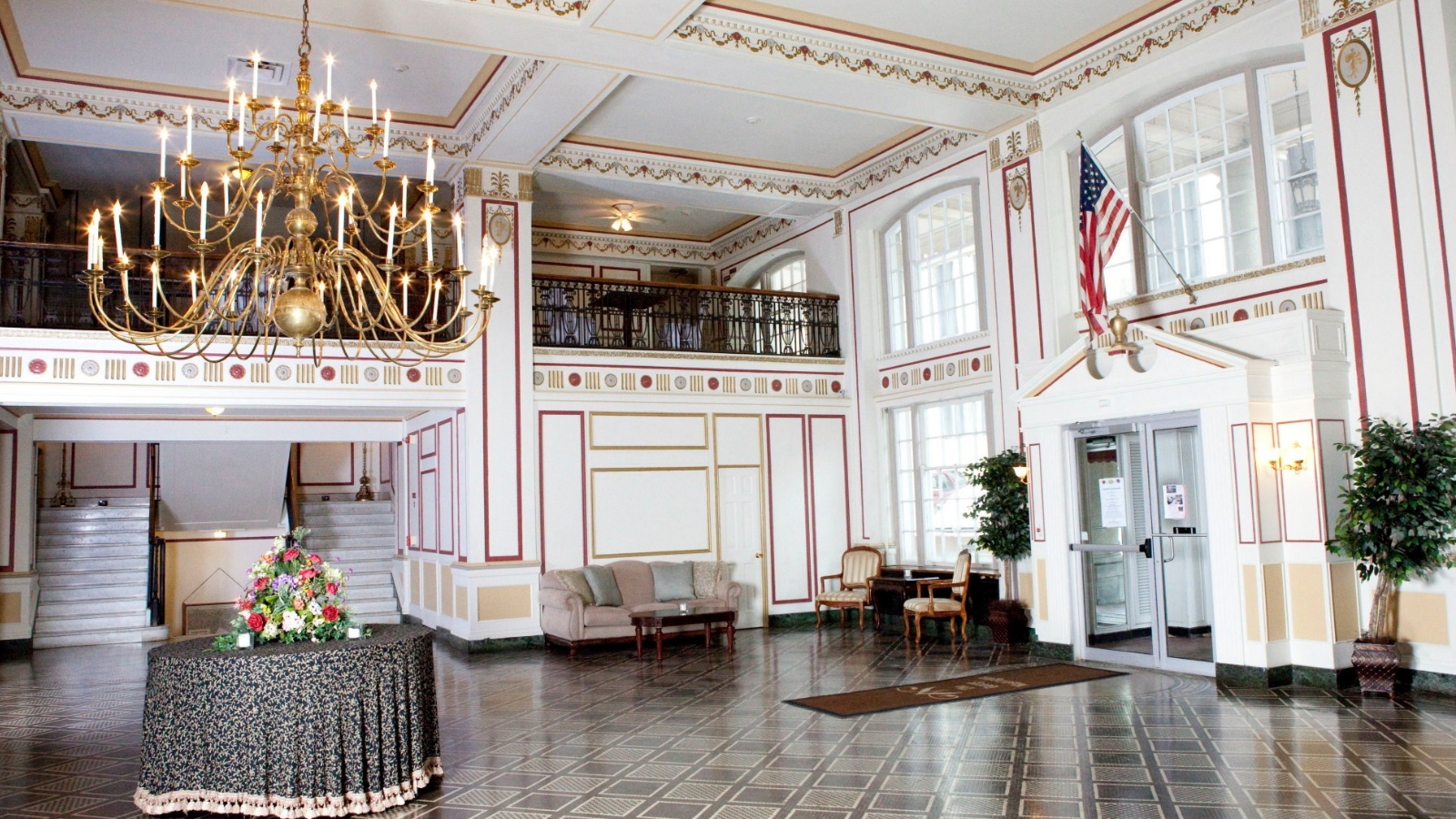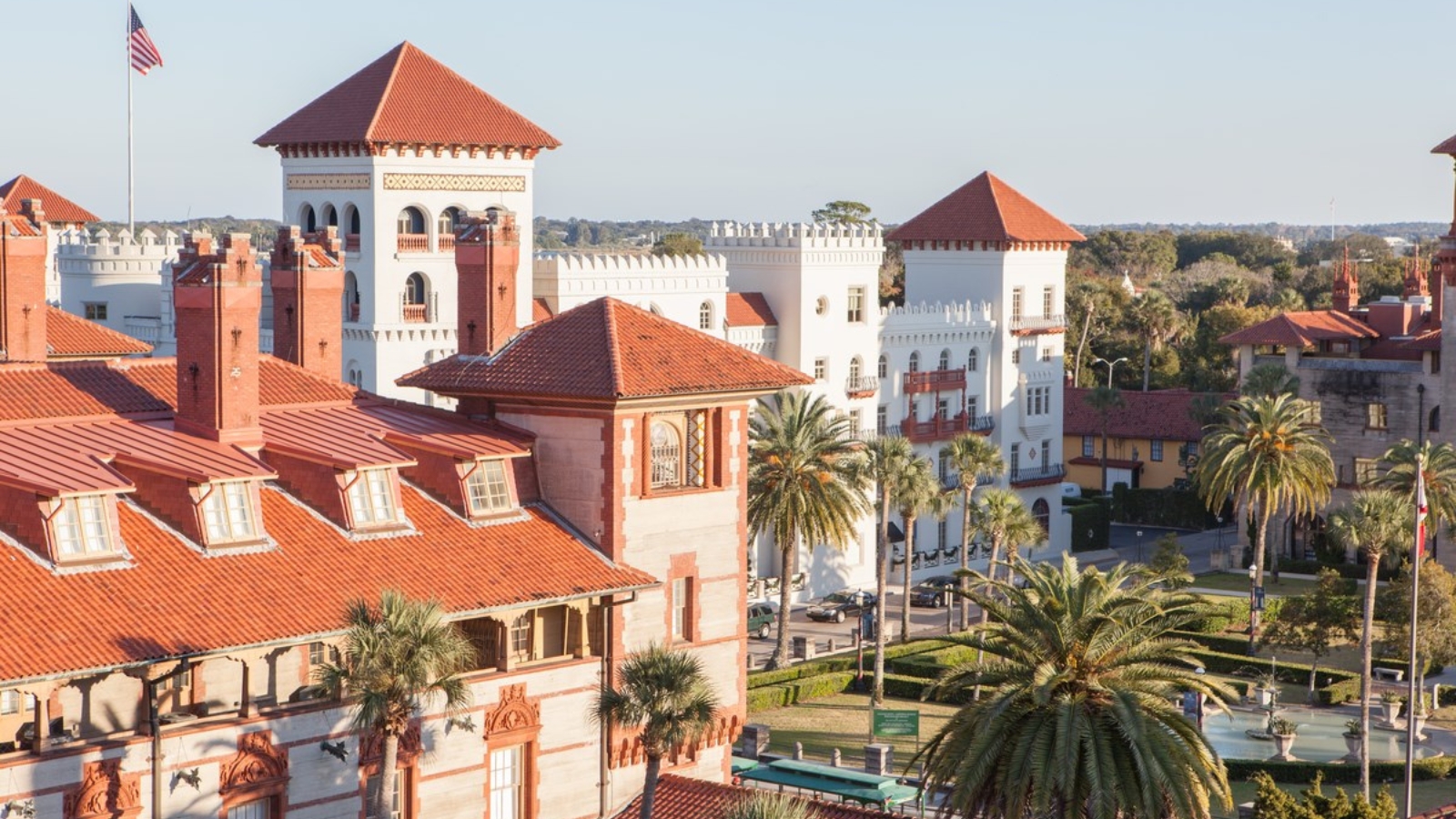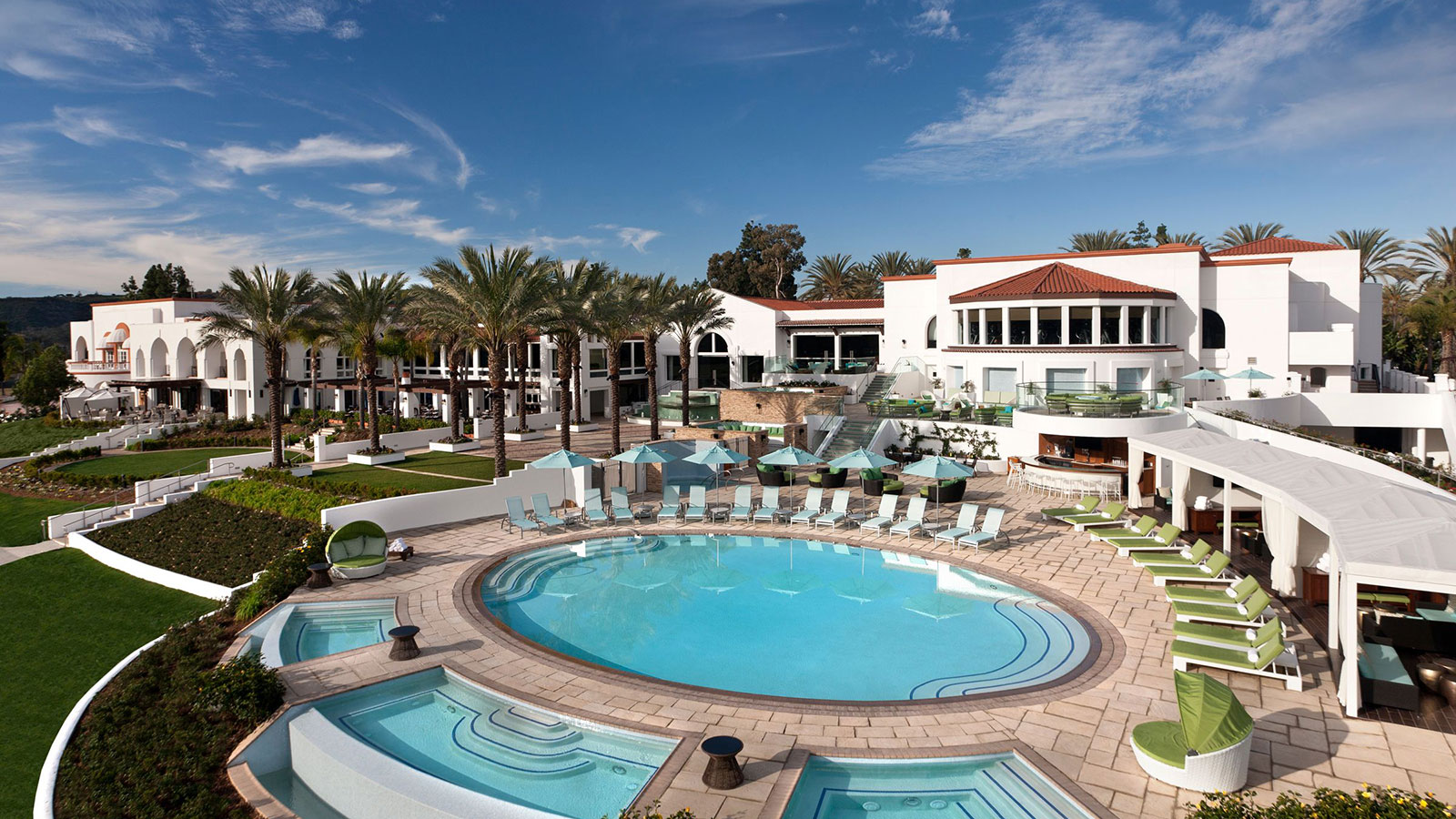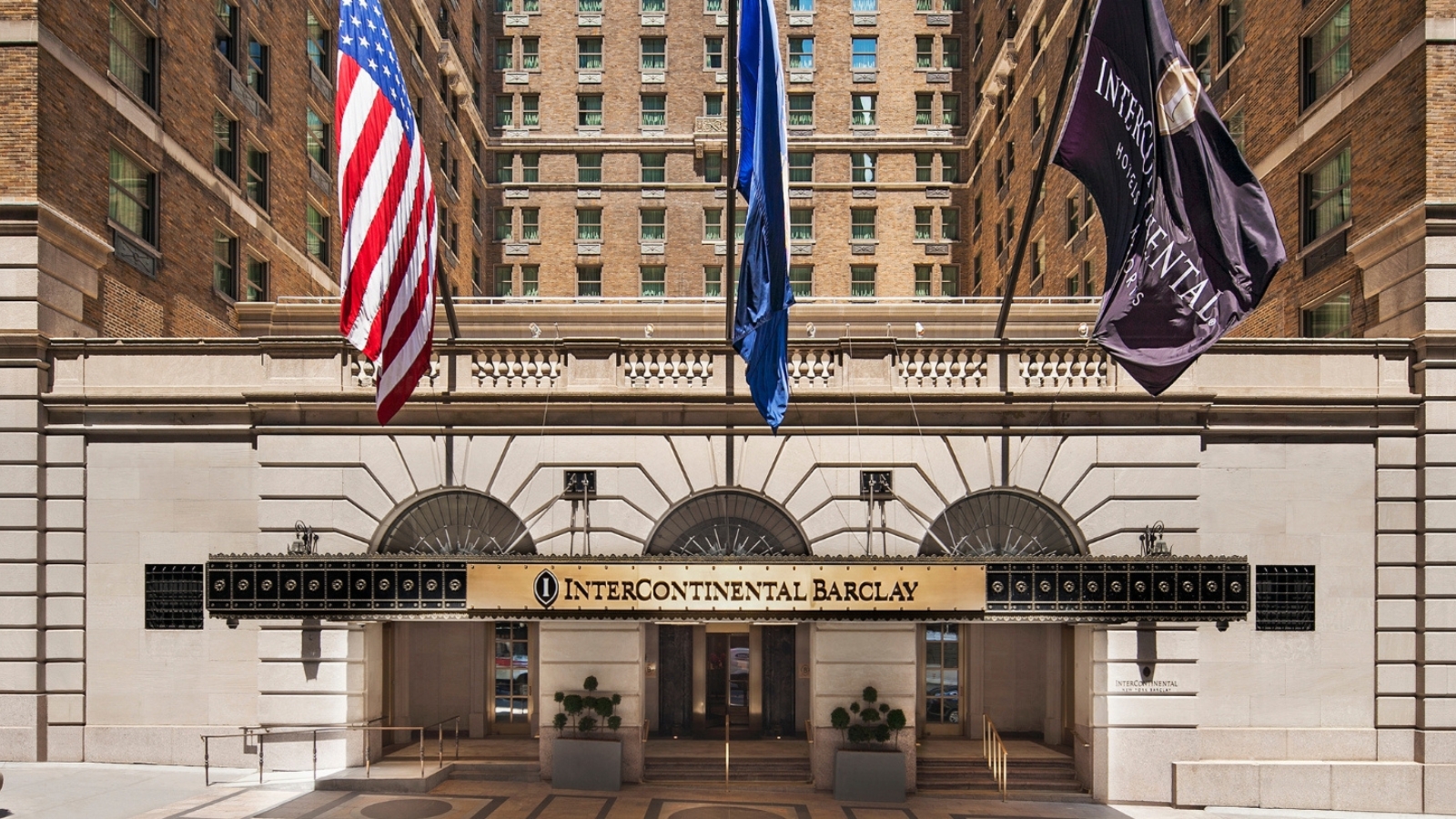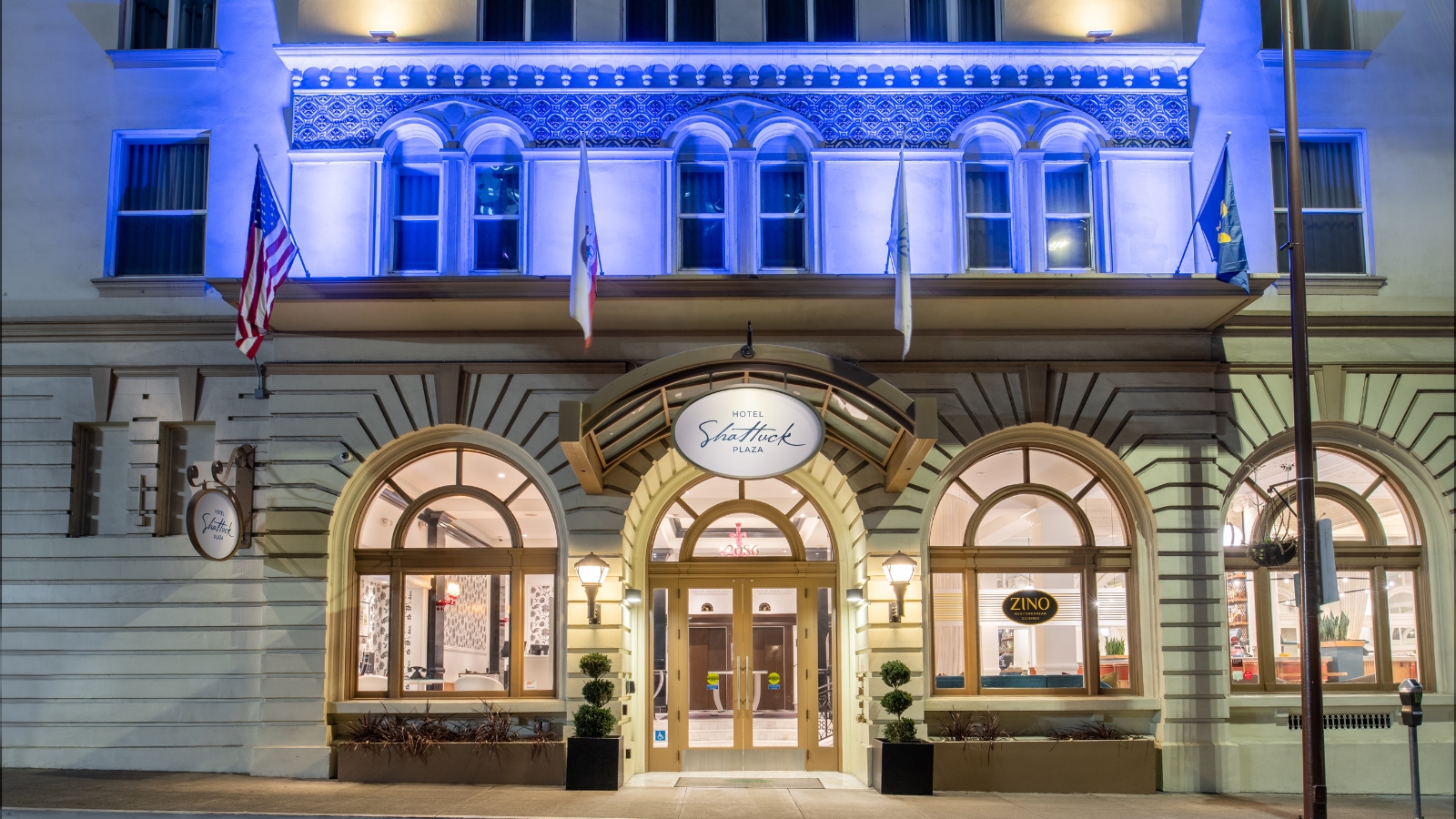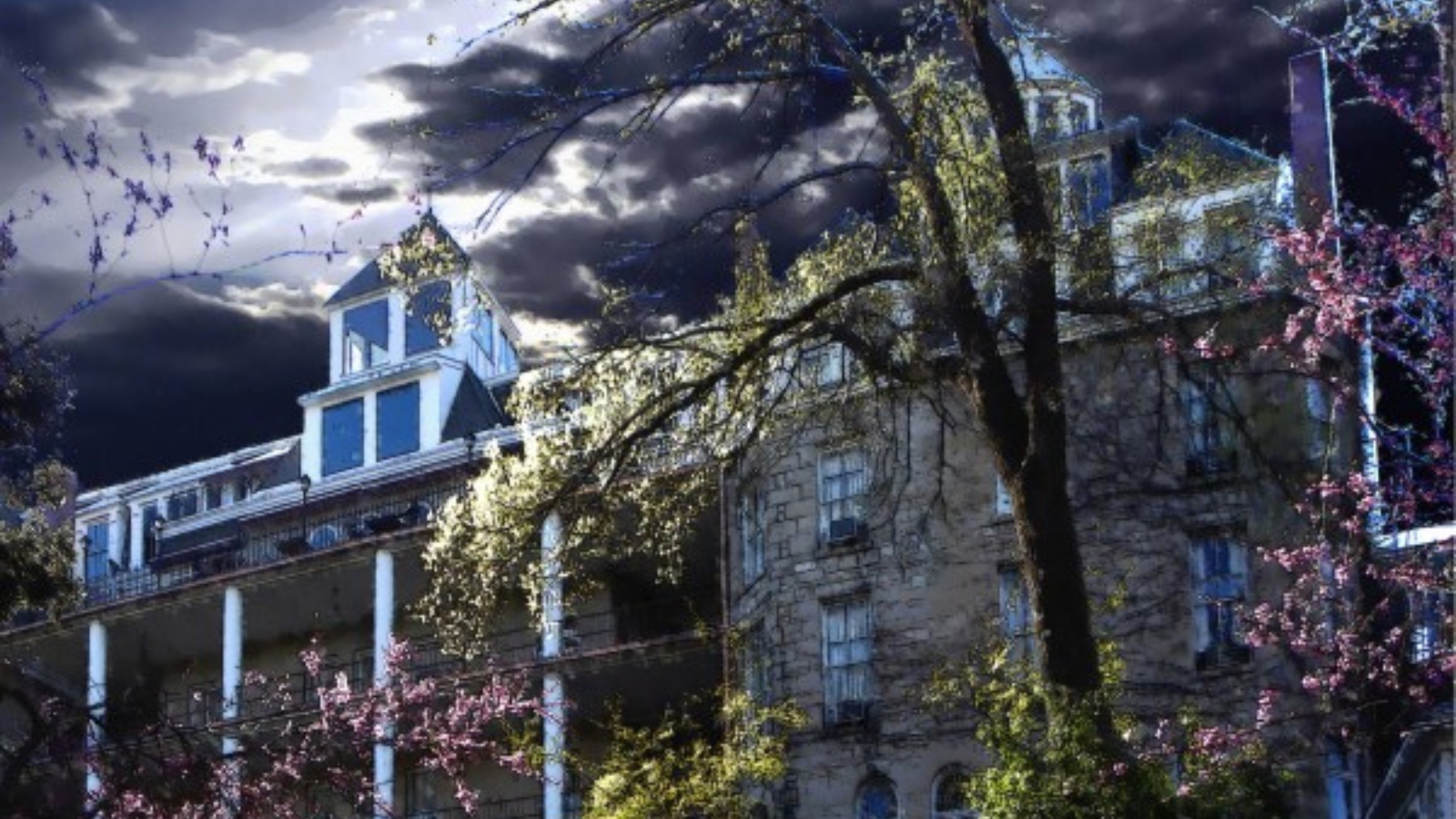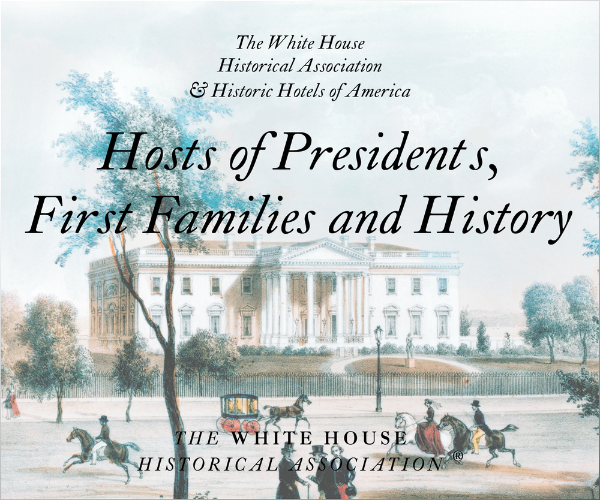Receive for Free - Discover & Explore eNewsletter monthly with advance notice of special offers, packages, and insider savings from 10% - 30% off Best Available Rates at selected hotels.
The 2024 Top 25 Historic Hotels of America® Where Women Made History
The 2024 Top 25 Historic Hotels of America® Where Women Made History List Is Announced
March 12, 2024 WASHINGTON, DC ---Historic Hotels of America®, the official program of the National Trust for Historic Preservation for promoting and celebrating authentic historic hotels, has released its 2024 Top 25 Historic Hotels of America® Where Women Made History List. Since 2020, the National Trust for Historic Preservation has supported the identification and elevation of women’s history at historic places through the Where Women Made History campaign. Historic Hotels of America is proud to tell the stories of women at its historic member hotels.
The written histories of historic hotels are largely records of the men who built, bought, visited, and made history at these hotels. In the United States, most historic hotels were built in eras where it was uncommon, even considered immoral, for a single woman to stay at a popular hotel without a female companion or family member. When travel became easier in the 19th century with the widespread use of passenger trains, women were expected to tend to their homes and their families, and not to travel on business or on their own for leisure. However, this does not mean that women were not present at hotels and, subsequently, not a part of the history of hotels in the United States in the 19th and early 20th centuries. Women-only hotels were once common and remained popular through the 1970s. Larger hotels offered separate women’s and men’s dining rooms and reading rooms, and tearooms for female guests. Within the fields of hotel management and design, a few women held privileged positions of power at hotels as the female relatives of hoteliers or were able to break social barriers and achieve professional success. Under racial segregation up until the mid-20th century, these spaces and rare opportunities for advancement at luxury hotels were exclusively for white women. However, women of all racial identities and classes have been making history at hotels throughout the history of American hospitality: performing historically gendered labor such as keeping rooms clean, meals served on time, and telephones connected, but even taking action to protest racial segregation.
At Historic Hotels that travelers can visit today, the achievements and compelling stories of the iconic “Harvey Girls” waitresses, trailblazing “Whirly-Girls,” First Ladies, athletes, artists, activists, engineers, entrepreneurs, and other women who made history represent many facets of women’s history and women’s diverse experiences in the United States. Historic Hotels of America invites travelers to experience these historic hotels in person, and to be inspired to learn more at these places where women made history.
 |
Women’s sports history has been made several times on the historic golf courses of The Omni Homestead Resort in Hot Springs, Virginia. Designated a National Historic Landmark by the U.S. Secretary of the Interior, and recently featured in the 2023 Top 25 Historic Hotels of America Most Historic Golf Courses List, this historic resort has hosted many tournaments since the 1890s, and women have made history on all the historic courses. The New York Times wrote on September 10, 1899: “The well-kept greens have won the praise of all the visiting experts, and, as usual, golf has been the most popular pastime here this Summer. Everyone is anxiously looking forward to the tournament.” Glenna Collett Vare, perhaps the greatest female golfer of her time, won the USGA Women’s Open on The Cascades course in 1928. The victory was among her finest, as she defeated one of her most challenging competitors, Virginia Van Wie. Collett’s win at The Omni Homestead would ultimately be the first of three consecutive first-place finishes in the U.S. Women’s Amateur tournaments; she would ultimately win six U.S. Women’s Amateur tournaments. In 1935, Babe Didrikson Zaharias famously drove her ball into the fork of a tree. Aspiring French golfer Catherine Lacoste won the 1967 U.S. Women's Open at The Omni Homestead Resort. An underdog heading into the competition, no one expected her to win amongst a crowded field of competitors like Louise Suggs, Marilynn Smith, and Sandra Haynie. Despite the odds stacked against her, she managed to beat the entire field, finishing with a 79 in the final round. Lacoste subsequently became the first international golfer to win the U.S. Women’s Open, as well as the youngest. She also had the distinction of being the only real amateur to win the tournament—an achievement that still stands today. |
 |
The Red Lion Inn has hosted guests in the picturesque town of Stockbridge, Massachusetts, for over 250 years, and has maintained a long-standing tradition of female stewardship. In 1773, Silas Pepoon established the small tavern and Anna Bingham, his widow, successfully operated the tavern for eleven years after his death. Bingham was the first documented businesswoman in Stockbridge. She also became the first female litigant before the U.S. Supreme Court during the settlement of Silas’ estate, upon application for renewal of her license, fighting for her right to run the tavern. A century later, “Mert” Plumb, married to the inn’s owner, took on the duties of managing the Inn, and began collecting antiques for refurnishing the Inn, some of which remain inside the Inn to this day. In recent decades, The Red Lion Inn has been owned and operated by three generations of women. In 1968, the Inn was purchased by Stockbridge residents, Jack and Jane Fitzpatrick, who renovated the property and made it a year-round destination for the first time. Jane operated the Inn until 1993, when her daughter, Nancy, followed in her mother’s footsteps, and became the President of The Red Lion Inn. In 2013, Nancy’s stepdaughter, Sarah Eustis, became part of the leadership team at the family-owned and women-operated historic hotel. Family recipes passed down through the generations of women also appear on the Inn’s menus. When The Red Lion Inn’s Apple Pie à la Mode recipe was selected for the 2023 Top 25 Historic Hotels of America Most Unique Culinary Heritage and Culinary Traditions, Nancy Fitzpatrick recalled that the recipe was passed down from her grandmother, Mary Pratt: “When we first opened, Nana May (as we called her), went out to the kitchen and showed the chef how she made her pie.” The Red Lion Inn, a Charter Member of Historic Hotels of America since 1989, dates to 1773. |
Washington, DC
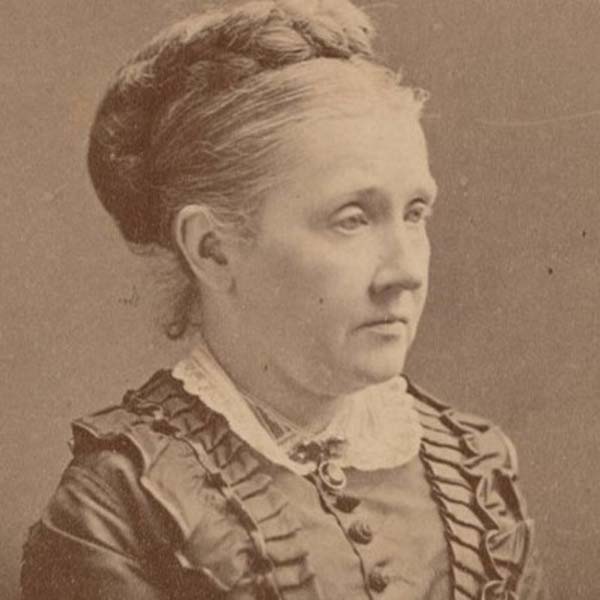 |
The Willard InterContinental, Washington, DC, has hosted an impressive roster of notable women over the past two centuries. The hotel offered something uncommon: public areas designated for women, including a Ladies’ Lounge, a private entrance for ladies to enter and exit the hotel, and the famous Peacock Alley, when the center of Washington, DC was dominated by male-only spaces. In The Pompeian Room, where men and women mingled, women were even permitted to smoke—scandalous at the time. One of the most notable women to stay at The Willard in the 19th century was Julia Ward Howe. Howe was an American writer and political activist who started her literary career in the 1850s. While she had attracted some national attention for her support of the abolitionist movement, Howe would not become a household name until she wrote the lyrics to the “Battle Hymn of the Republic” at the beginning of the American Civil War. Howe was inspired to pen the song during a trip to Washington with her husband to meet President Abraham Lincoln in 1861. Inspired by the music she had heard during a review of the troops, Howe returned to her guestroom at The Willard that night and began to write. By morning, she had written the verses for a new song that served as the spiritual ode to the preservation of the Union. Entitled “Battle Hymn of the Republic,” it first appeared on the front page of The Atlantic Monthly in February 1862. It was an overnight sensation, becoming one of the most frequently sung tunes by Northern soldiers during the American Civil War. |
Washington, DC
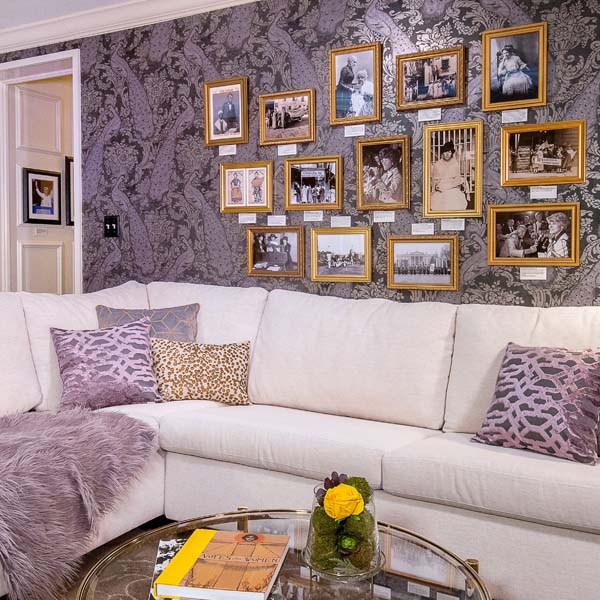 |
Given its prime location just a few blocks from the White House, Hamilton Hotel has seen its fair share of history pass through its stately hallways since it opened in 1851. However, this storied hotel is not just a testament to the “old boys’ club.” In fact, while some might assume that the Hamilton Hotel takes its name from one of the United States’ Founding Fathers, Alexander Hamilton, the moniker honors his second daughter, Eliza Hamilton Holly, who was a family friend of the hotel’s original owner. The Hamilton Hotel continues to draw inspiration from history-making women to this day with The Suffrage Suite: Women Win The Vote. Created in partnership with the Freedom Forum’s Newseum and Boston-area political activist Barbara Lee, the suite was unveiled in 2020 to celebrate the 100th anniversary of women’s suffrage. It is a women’s history exhibit and a guestroom, featuring a treasure trove of photographs, original artwork, historical artifacts, and more contemporary memorabilia—all curated by Samantha Barry, the editor-in-chief of Glamour magazine. The suite is decorated in shades of yellow and purple, the colors of the suffragists. Within the suite, guests can experience the stories of suffragists, from Sojourner Truth and Susan B. Anthony, to modern-day changemakers like Supreme Court Justice Ruth Bader Ginsburg and the 116 women elected to Congress in 2018, the “Year of the Woman.” A member of Historic Hotels of America since 2021 and listed in the U.S. National Register of Historic Places, the Hamilton Hotel is a Beaux-Arts-style masterpiece, and has been one of the most illustrious hotels in the capital city for generations. |
Chicago, Illinois
 |
Bertha Honoré Palmer’s life became entwined with the historic Palmer House®, A Hilton Hotel when she married Potter Palmer, who built the hotel for her as a wedding present in 1871. Today, the hotel’s interior beauty and personality can be traced to her creativity and passions. The glamour of the hotel can, in part, be credited to her interior design choices: she specifically installed additional features like garnet-draped chandeliers; a 1.25 ton, 24-karat gold winged-angel Tiffany candelabra; and 21 breathtaking ceiling frescoes created by French painter Louis Pierre Rigal. A great patron of the arts, in her lifetime, Palmer collected over 200 Impressionist paintings, making it one of the largest collections of its kind outside of France. She selected pieces from her own collection to curate the hotel, and much of the collection is now part of The Art Institute of Chicago. Palmer is also famous for her work planning the World’s Columbian Exposition of 1893. She was involved in the creation of the exposition’s Women’s Building, which showcased the historical achievements of American women over the past century, and famously proclaimed there, “even more important than the discovery of Columbus is the fact that the government has just discovered women.” Her experiences at the World’s Fair inspired her to create a unique treat that guests could easily eat when walking through the Palmer House®, A Hilton Hotel. At her request, the hotel’s team of pastry chefs concocted a handheld, cake-like chocolate dessert that they called the “brownie.” Although they have likely enjoyed the treat before, guests can experience the Palmer House Brownie during their visit, and can even take a square home with them. Listed in the National Register of Historic Places, Palmer House®, A Hilton Hotel dates to 1871, and was inducted into Historic Hotels of America in 2007. |
New Castle, New Hampshire
 |
A member of Historic Hotels of America since 2004, Wentworth by the Sea is among the last great stately resort hotels to grace New Hampshire’s coast. Originally opening as The Wentworth Hotel in 1874, the resort provided sun, sand, and sea to generations of guests. Among the activities Wentworth by the Sea offered were classes taught by renowned experts. Two of the experts brought in to entertain guests were trailblazing female celebrities of the early-20th century: sharpshooter Annie Oakley, and Olympic swimmer Helen Wainwright. Annie Oakley was a renowned sportswoman who became a pop culture icon for her incredible marksmanship during America’s Gilded Age. Oakley arrived at Wentworth by the Sea in 1916, and exhibited her rifle skills and abilities on horseback. Throughout her career, Oakley taught thousands of gun-handling lessons to interested individuals. In 1920, new management led to exciting modern amenities and entertainment, including a saltwater pool, a nine-hole golf course designed by legendary golf course architect Donald Ross, and private bathrooms in the guestrooms—a luxury at that time. After the change in management, Oakley supervised shooting lessons at the resort's new golf course. Oakley was followed by Helen Wainwright, an internationally renowned swimmer who competed in the 1920 and 1924 Olympic Games. Notably, Wainright won Olympic silver medals in both swimming and diving. She trained to be the first woman to swim across the English Channel, though she never completed it due to injury. In 1925, Wainwright taught swimming classes at Wentworth by the Sea and gave special demonstrations for guests in the saltwater pool. She was at the height of her fame. Once dubbed "America's all-around champion mermaid" by The New York Times, Wainwright continued coaching swimming and in 1972, she was inducted into the International Swimming Hall of Fame in Fort Lauderdale, Florida. |
Eureka Springs, Arkansas
 |
Known as “The Grand Ol’ Lady of The Ozarks,” 1886 Crescent Hotel & Spa opened in 1886 in Eureka Springs, Arkansas. Between 1908 and 1934, during the resort’s “off” seasons, the Crescent College & Conservatory for Young Women housed students at the hotel. An advertisement in the Arkansas Gazette on July 6, 1910, described the girls’ school as being "on top of the Ozarks, at Eureka Springs, the famous health resort. Most picturesque town in America," where young women could take “Full Preparatory and Collegiate courses. Conservatory of Music, Art, Expression, Commercial branches, Horseback riding a feature.” It soon became one of the most exclusive boarding academies in Arkansas, training the minds of countless women who passed through its doors. Due to tough economic times brought on by the Great Depression, the college closed in 1934. Among its most influential graduates are Mary Ella Lundy and Mayme “Natachee" Scott Momaday. Lundy, a dedicated athlete and musically gifted student during her time at Crescent College, went on to become the Head of Women's Education and Physical Education for Women at the University of Georgia for 35 years. Momaday made history for her talents as an artist, educator, and writer. Because of her Kiowa and Cherokee heritage, she championed Native American cultures and student-centered education. Momaday taught at the Jemez Pueblo Day School in New Mexico and is popularly known as the author of the children’s book, Owl in the Cedar Tree (1965). |
Durango, Colorado
 |
When Hattie Mashburn and her business partner, Charles E. Stilwell, purchased The Strater Hotel in Durango, Colorado, in 1893, she broke with convention in an era where women were generally expected to maintain a home for their family, work in a factory, or be in service to another household. Professional occupations like hotel management and investing were uncommon for women to pursue in the 1890s, but Mashburn grew up in a large family that educated its daughters, as well as its sons, and she set out to make a successful living. In Colorado, where women’s political and economic power was less restricted than in the Southern and Eastern United States, Mashburn became a hotel manager and real estate investor. After decades overseeing the hotel, she sold The Strater Hotel in 1926 to a group of investors led by Earl A. Barker, Sr. In the second half of the 20th century, through their connections to Barker, two notable women worked to preserve the history and architecture of The Strater Hotel: Marion L. Jarvis and her daughter, Jentra Barker. Jarvis guided her daughter (who was married to Earl Barker, Jr.) in acquiring period furniture and restoring the family-managed hotel. Jarvis’ vision for the hotel's preservation is still reflected in the American Victorian style interior design of the building, especially in the Diamond Belle Saloon. Jarvis was also an author and published several books, including The Strater Hotel Story, A story of the old landmark of the Southwest (1963) and "Come on in Dearie": Or Prostitutes and Institutes of Early Durango (1976). An authentic and refined “Old West” hotel, The Strater Hotel is centrally located in Durango, Colorado, just two blocks from the historic Durango & Silverton Narrow Gauge Railroad. The Strater Hotel, a Charter Member of Historic Hotels of America since 1989, dates back to 1887. |
Jekyll Island, Georgia
|
|
The Jekyll Island Club Resort on Jekyll Island, Georgia, opened in 1887 as a private club for the United States’ wealthiest families. The club’s members were all men at the time, but as a New York Times article described in 1886, the club was not intended to be "a selfish and exclusive 'man's' club.” It was a Gilded Age family retreat, and the daughters, wives, and sisters of male club members were welcome to enjoy the same club privileges, including fishing, shooting, horseback riding, swimming, and camping. The club truly broke with the club norms of the time when in 1893, the first female member, Kate Allerton Papin, inherited her father’s membership. According to historians at the Jekyll Island Club Resort, Papin was likely one of the first women, if not the first woman, to enjoy full membership in a prestigious men’s social club of the era. Several years later, in 1897, Frances Baker became the first woman to be a club member in her own right. Within 50 years, the club boasted 31 women who were full members. As wealthy women with philanthropic experience in their home cities, the female club members invested in the social welfare of the region. Their efforts led to the opening of a local hospital and two schools for the children of the Jekyll Island Club staff, among other projects. The Jekyll Island Club Resort was inducted into Historic Hotels of America in 1994. |
Grand Canyon, National Park, Arizona
 |
Carved by the mighty Colorado River, the majesty of the Grand Canyon has been a source of artistic inspiration for thousands of years. Several hotels inducted into Historic Hotels of America are located in Grand Canyon National Park, and reflect this source of artistic inspiration. Two of these hotels were designed by pioneering architect Mary Elizabeth Jane Colter. Between 1902 and 1948, Colter worked her way up to become the principal architect and interior designer for the Fred Harvey Company, a popular tourism and hospitality company prominent in the American West. Although Colter designed and decorated many buildings throughout her prolific career, some of her seminal works are the park’s Bright Angel Lodge & Cabins and Phantom Ranch. Both lodgings have been members of Historic Hotels of America since 2012. These Grand Canyon National Park hotels showcase Colter’s take on National Park Service rustic-style architecture, which draws upon a building’s surroundings for inspiration, utilizes natural materials, and synthesizes architectural styles like Mission Revival, Spanish Colonial, and Arts and Crafts, to create an organic aesthetic and architectural style. This can especially be seen in her “Geologic Fireplace” in Bright Angel Lodge’s History Room. In a true masterstroke, the fireplace is crafted from each of the Grand Canyon’s rock layers, from cobbles from the river, up to the rim’s newer stone strata. Bright Angel Lodge & Cabins was completed in 1935, and today, it is a hub of activity along the gorge’s South Rim, as it serves as the check-in point for the Grand Canyon’s famous mule rides. Phantom Ranch opened in 1922, and today, it retains the same rustic charm and sense of adventure that Colter imbued in it many years ago, remaining the only lodging facility located beneath the canyon rim. Open year-round, Phantom Ranch is only accessible by mule, by foot, or by rafting down the Colorado River. The accommodations available at Phantom Ranch are dormitory spaces and cabins. |
Denver, Colorado
 |
On April 29, 1912, Margaret “the Unsinkable Molly” Brown checked into The Brown Palace Hotel and Spa in Denver, Colorado. Just two weeks prior, she survived the tragic sinking of the RMS Titanic on April 15, 1912. After organizing charitable donations from her fellow first-class passengers for less fortunate survivors aboard the RMS Carpathia and arriving safely in New York City, Brown traveled to Denver and spoke with the press at the hotel about her experience on the ill-fated ship. A reporter for Rocky Mountain News quoted her saying, “A tragedy like that of the Titanic...was as unnecessary as running the Brown Palace into Pikes Peak.” Although having no connection to the businessman with the same last name who founded the historic Grande Dame twenty years earlier, Margaret Brown was a frequent guest at the hotel for many decades until she died in 1932. Brown and her husband came from humble origins and made their fortune in Colorado mining. Brown traveled frequently for philanthropic work and political causes—including women’s suffrage—but when she was in Denver, she enjoyed staying at the Grande Dame hotel so much that Room 629 was always reserved for her. She took voice lessons from her room there, and hosted royalty. Today, The Brown Palace Hotel and Spa, Autograph Collection is five blocks away from the Molly Brown House Museum, where visitors can learn more about the hotel’s famous guest. The Brown Palace Hotel and Spa, Autograph Collection, a Charter Member of Historic Hotels of America since 1989, dates to 1892. |
St. Louis, Missouri
 |
On September 1, 1894, the iconic Union Station opened its doors as a major train depot. Today, the St. Louis Union Station Hotel, Curio Collection by Hilton, is a popular family entertainment destination. When this National Historic Landmark opened, it was a symbol of the city's position as a hub of commerce and transportation. Legendary restaurateur Fred Harvey opened his Harvey House dining room at Union Station in 1895. Visitors can dine in the same elegant dining room today, now called the Station Grille. In its heyday, St. Louis Union Station was the largest and busiest railroad terminal in the nation, with more than two dozen railroads operating from its massive train shed. In 1943, at the height of World War II, the Fred Harvey restaurants at Union Station served more than 2,700,000 meals in their three distinctive dining rooms. Dining with Fred Harvey was an elegant experience, with linens imported from Ireland, silver from England, and china from France. Harvey's waitresses were recruited to head West, and formed the bulk of the workforce. To be a Harvey Girl, women had to be between the ages of 18-20 and of "good character"—they even had to sign a contract to stay in their job for one year at a fixed rate of $17.50 per month. The Harvey Girls were housed in dormitories and watched over by a “housemother.” During the early era of the Fred Harvey Company, Harvey Restaurant waitresses wore long black dresses with starched white collars and white aprons. They also could not wear makeup, pinch their cheeks, or flirt. Nevertheless, the "Harvey Girls" helped make the restaurants a fixture in the St. Louis community for years until the station’s conversion to a hotel at the end of the 20th century. |
New York, New York
 |
Since opening at the turn of the 20th century, The Algonquin Hotel Times Square, Autograph Collection, has been a cultural phenomenon. Standing as one of New York City's greatest storied hotels, it is perhaps best known for The Round Table, one of the literary world’s most famous gathering spots. Beginning in 1919, a group of writers and critics gathered weekly for lunch to discuss current and upcoming projects. Famous attendees of The Round Table included American literary legends Dorothy Parker and Edna Ferber, whose careers are intertwined with the esteemed hotel. The Algonquin Hotel Times Square, Autograph Collection, was one of the first New York City hotels that welcomed reservations from single female guests. In 1955, contralto Marian Anderson made her debut at the Metropolitan Opera, becoming the first Black singer to hold a leading role in the renowned company, while in-residence at The Algonquin. Anderson is one of many accomplished women that were long-term guests of the hotel; others include celebrated poet Maya Angelou, author Gertrude Stein, and jazz icon Ella Fitzgerald. During Women’s History Month 2024, The Algonquin Hotel Times Square, Autograph Collection is serving a new cocktail at its famed Blue Bar named after Dorothy Parker. Visitors can order “Dorothy’s Wit," made with elderflower gin, lemon juice, raspberry syrup, and egg white, and raise a glass to the writer and her legacy at the hotel and in the literary world. A portion of proceeds from drink orders will be donated to a women’s organization in New York City. The Algonquin Hotel Times Square, Autograph Collection was inducted into Historic Hotels of America in 2023. |
West Baden Springs, Indiana
 |
West Baden Springs Hotel has long captivated the imaginations of its guests with its unique architecture and luxurious amenities. Since 1902, its most stunning feature is its unique architecture, epitomized by the magnificent historic dome that rests atop the resort. While many have contributed toward creating the opulence that defines the West Baden Springs Hotel, none were more influential than Lillian Sinclair Cooper. The daughter of the hotel’s owner, Lee Wiley Sinclair, Cooper assumed managerial responsibilities over the West Baden Springs Hotel in 1912, and inherited the hotel upon his death in 1917. Her appointment prompted her to initiate extensive renovations. She oversaw the creation of numerous new architectural motifs, including the development of a stunning brick driveway that featured 24 elaborate eagle-topped light standards. The road’s most compelling feature was the Beaux-Arts-inspired gateway that Cooper herself made with double-arched steel and stone. While her work covered many areas of the hotel building, it was underneath the dome where she truly left her mark. Cooper’s new additions featured a floor-to-ceiling “classical reformation,” which replaced the brick façade with marble-paneled lower walls and plastered columns. However, she also focused on the atrium, installing millions of gorgeous marble tiles, and adding an 11-foot-tall, 20-foot-wide Rookwood Pottery fireplace. The West Baden Springs Hotel is truly an architectural masterpiece, thanks in no small part to the efforts of Lillian Sinclair Cooper. West Baden Springs Hotel, built in 1902 and inducted into Historic Hotels of America in 2009, is designated a National Historic Landmark by the U.S. Secretary of the Interior. |
Tonopah, Nevada
 |
The Mizpah Hotel in Tonopah, Nevada, was heralded as “the finest stone hotel on the desert” by local newspapers when it opened its doors in 1908, and was the state’s tallest building at the time. The Mizpah Hotel became the gathering place for the mining and political elite of Nevada; prominent guests included Tasker Oddie, who became governor of Nevada and later a U.S. Senator; Key Pittman, another U.S. Senator from Nevada; and Henry Calvin “Cal” Brougher, the director of the Mizpah Hotel Corporation of Tonopah. But women, too, gathered there to increase their own political and economic power. Between 1912 and 1914, Nevada women met at the Mizpah Hotel to organize for women’s suffrage. The hotel is part of the William G. Pomeroy Foundation’s National Votes for Women Trail, and a marker was installed outside the hotel in 2019, describing its historical significance. The meetings at the Mizpah Hotel were led by Marjorie Moore Brown. According to the Nevada Women’s History Project, Brown was a founding member of the Nevada Equal Franchise Society, and a member of the National Woman Suffrage Association, among other organizations. Brown lived in, and organized for women’s rights in, Tonopah, rubbing elbows at the Mizpah Hotel with the likes of Oddie and Pittman, until she moved out of the state in the early 1920s. Visitors today can see the women’s suffrage marker right outside the hotel, at the corner of Veterans Memorial Highway and Brougher Avenue. |
San Francisco, California
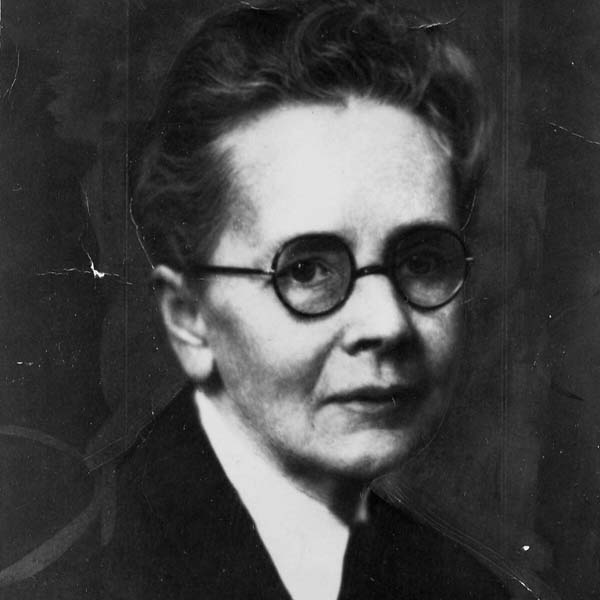 |
The story of The Fairmont Hotel San Francisco dates to 1903, when two sisters—Theresa Fair Oelrichs and Virginia Fair Vanderbilt—decided to build a spectacular boutique hotel in the heart of San Francisco’s Nob Hill neighborhood. Dedicated in honor of their father, Senator James Graham Fair, the two sisters hoped that the business would become a renowned local icon. However, mere weeks after the building debuted to the public, the San Francisco Earthquake of 1906 struck the region. Like many other buildings in Nob Hill, The Fairmont Hotel was destroyed. Undeterred, the sisters hired an up-and-coming architect and engineer Julia Morgan to rebuild the entire structure. Under the direction of Morgan, The Fairmont San Francisco became the city’s first major business to reopen following the earthquake when it opened in 1907 and Morgan’s hotel is the one travelers flock to visit today. Morgan was one of the world’s preeminent female architects: the first woman to be admitted to study architecture at École des Beaux-Arts, and the first woman to be granted an architect’s license in California in 1904. Her early advancement in San Francisco was due to her uncommon knowledge of earthquake-resistant concrete construction—a lucrative skill after the 1906 earthquake. She went on from designing The Fairmont Hotel San Francisco to design hundreds of buildings, many listed in the National Register of Historic Places, and at least two designated National Historic Landmarks by the U.S. Secretary of the Interior. The Fairmont Hotel San Francisco was inducted into Historic Hotels of America in 2001 and listed in the National Register of Historic Places in 2002. |
Boulder, Colorado
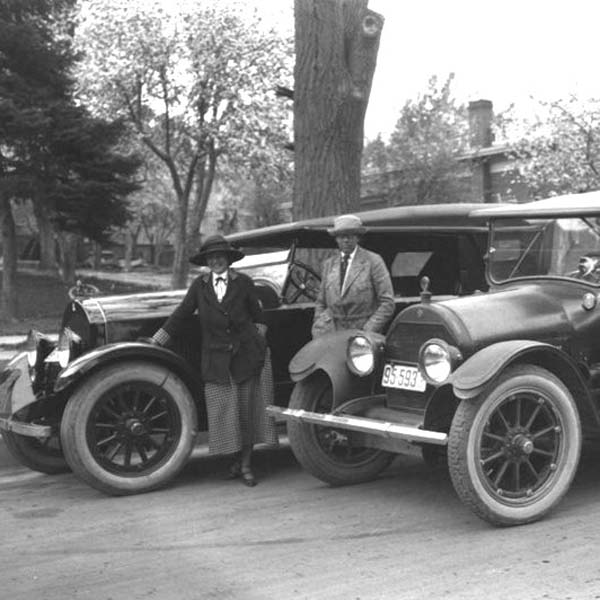 |
In 1922, two entrepreneurial women began operating their successful taxi business from an office at Hotel Boulderado, which opened in Boulder, Colorado, in 1909. The story of Florence Molloy and Mabel MacLeay can be traced to the 1910s, when the two women met in Syracuse, New York. Both were married previously, and census records state they were either divorced from or widowed by their husbands by the time they moved out west. What is known is that they became good friends in New York and moved to Colorado together by 1918. The women were excellent drivers, and to make money, they started a small scenic tour business with a Cadillac 8, showing tourists the beauty of Colorado between Estes Park and Nederland. During the Flu Pandemic of 1918, Molloy and MacLeay saw a need for taxi services and then, as the community rebounded, their work blossomed into a thriving transportation company. By 1922, the Molloy-MacLeay Taxi Company moved into Hotel Boulderado. They continued to serve the Boulder community, driving guests anywhere in Boulder for $0.25 per ride, until 1927. On the eve of the Great Depression, the two women sold the business and opened a dude ranch on Gold Hill in Boulder, which later became the Colorado Mountain Ranch, and is still in operation. Today, guests can see Molloy and MacLeay’s portraits as a part of the self-guided and historian-guided history tours around the Hotel Boulderado. |
Nashville, Tennessee
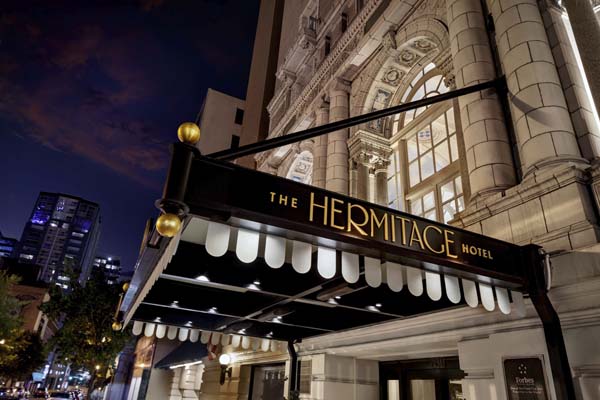 |
In 2020, The Hermitage Hotel was designated a U.S. National Historic Landmark by the U.S. Secretary of the Interior for its integral place in the ratification of the 19th Amendment to the U.S. Constitution. A century prior, in 1920, the fate of the amendment hung precariously in the balance. With nearly all of the states split evenly over its pending passage, only North Carolina and Tennessee were undecided. Led by esteemed suffragists like Carrie Chapman Catt, (President of the National American Women Suffrage Association) and Anne Dallas Dudley (President of the Tennessee Equal Suffrage Association), suffragists from around the nation flocked to Nashville to push for the law’s adoption. Catt, Dudley, and their colleagues eventually set up headquarters at The Hermitage Hotel to coordinate with their allies in the Tennessee State Capitol nearby. For weeks, the suffragists campaigned to shore up political support among state politicians, holding frequent meetings and social gatherings inside The Hermitage Hotel. They even had to contend with the presence of many anti-suffragists, who quickly established their own offices within the building. Despite winning the support of the Tennessee Senate, the suffragists struggled to get enough votes within the deadlocked Tennessee House of Representatives. However, a young representative named Harry T. Burn decided to flip his vote to “yes” after reading an impassioned letter from his mother, who encouraged him to support Carrie Chapman Catt. The amendment subsequently passed amid a second round of voting on August 18, officially ratifying the 19th Amendment. A chorus of cheers erupted all over the city, and countless suffragists flooded into The Hermitage Hotel to celebrate. In the years since the ratification of the 19th Amendment, The Hermitage Hotel has honored and shared with visitors its connection to women’s history in the United States. One example of this is the “Suffrage Getaway Experience” package. Created to help celebrate the centennial of the 19th Amendment, The Suffrage Getaway Experience includes a welcome packet with information on area suffrage tours; a welcome amenity of yellow roses and Suffrage-era shortbread cookies; access to events and displays; and a copy of the book The Woman’s Hour – The Great Fight to Win the Vote by Elaine Weiss. The hotel offers a wealth of programming that highlights this history for guests and visitors alike: Suffrage Sunday suppers, a Yellow Rose Tea every week in August, and a 45-minute Suffragist History Tour. The Grande Dame of Nashville for over 110 years, the Hermitage Hotel first opened its doors to guests in 1910, and was inducted into Historic Hotels of America in 1996. |
Oklahoma City, Oklahoma
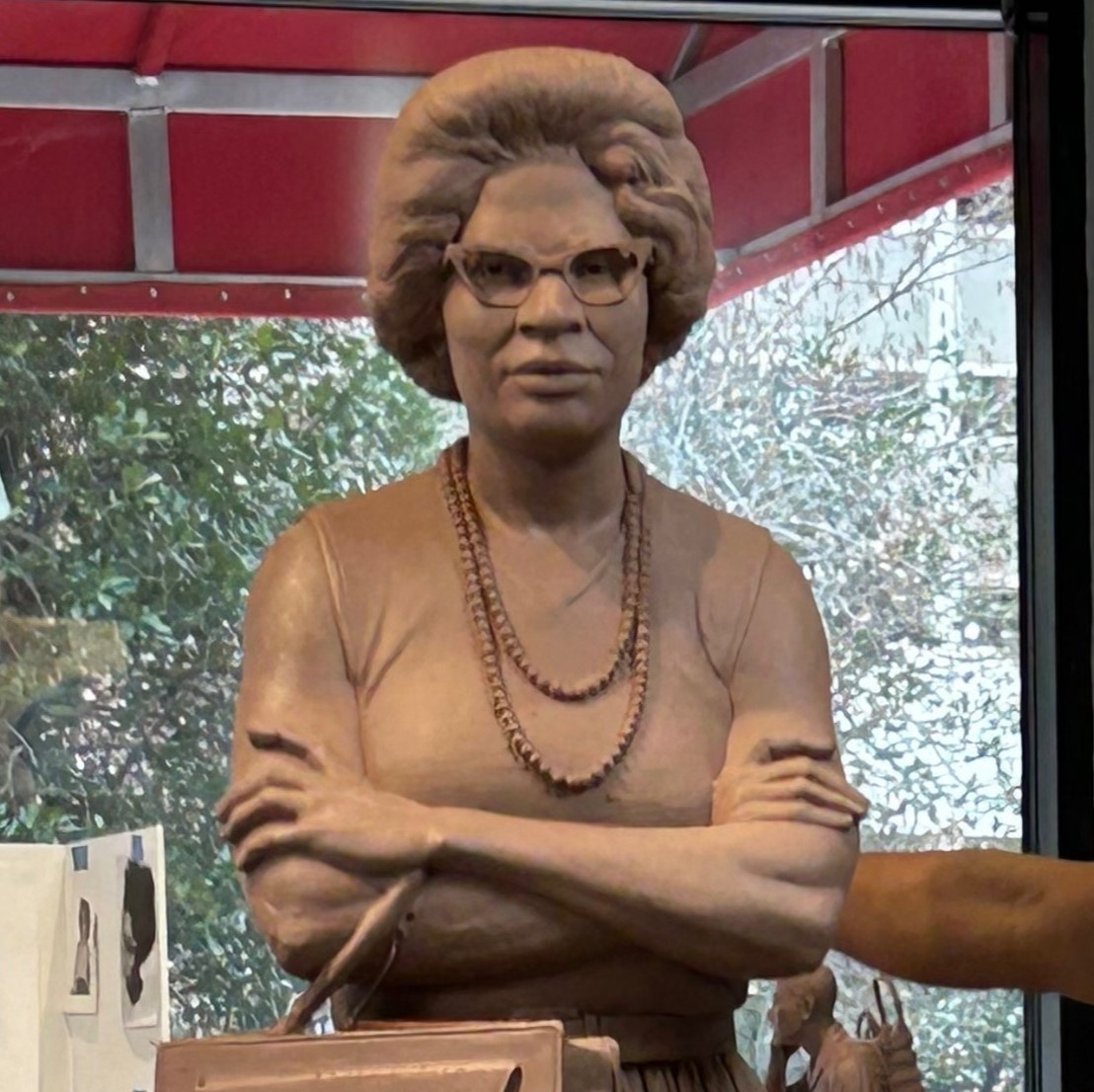 |
Women’s history and Civil Rights history was made at The Skirvin Hilton Hotel in Oklahoma City, during the summer of 1961, when Clara Luper, a schoolteacher and adviser to the NAACP's local youth council, selected its segregated lobby as a site for a lunch counter sit-in protest. This sit-in was one in a series of Oklahoma City, Oklahoma, sit-ins that Luper organized, beginning with the Katz Drug Store sit-in of 1958, and continuing at other restaurants that only allowed white patrons to sit and eat. During the Oklahoma City sit-in movement, she, her young son and daughter, and numerous young members of the NAACP Youth Council successfully conducted carefully planned nonviolent sit-in protests of restaurants. The segregation policies at the places they sat-in were eventually overturned, but these businesses required pressure from activists like Luper to change. Her actions in Oklahoma City inspired future sit-ins, such as the 1960 Woolworth’s Lunch Counter Sit-In in Greensboro, North Carolina, and her students went on to participate in other Civil Rights Movement actions, including the Birmingham Children’s Crusade on May 2, 1963. In 2023, The Skirvin Hilton Oklahoma City’s Artist in Residence, LaQuincey Booker T. Reed, designed a Clara Luper statue, part of the new Clara Luper Sit-In Plaza, located where the Katz Drug Store once stood. The hotel is honored to support Mr. Reed’s work and to have this opportunity to participate in a momentous celebration of Clara Luper’s activism. Listed in the U.S. National Register of Historic Places, The Skirvin Hilton Oklahoma City was inducted into Historic Hotels of America in 2008. |
Wilmington, Delaware
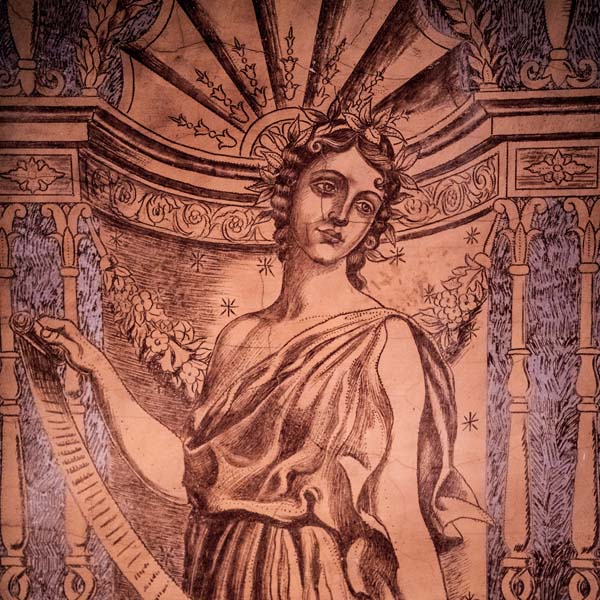 |
When HOTEL DU PONT opened in 1913, the 12-story, Italian Renaissance-style building was widely considered to be a great achievement in both hotel architecture and ingenuity. Five years later, the hotel was expanded to offer more guestrooms and the Ballroom Suite, which included the Gold Ballroom. This breathtaking ballroom features French neoclassical design elements, including glistening chandeliers, gilded ceiling detail, and hand-carved medallions featuring bas-reliefs of famous women. In a design orchestrated by Violet Terwilliger of New York, the bas-relief medallions depict twenty women from history including Mary Stuart, Pocahontas, Emma Lady Hamilton, Queen Cleopatra, and Dido Elizabeth Belle. The walls depict women in typical fashions from different eras around the world, along with mythological figures. The artwork was created using sgraffito, a "scratching" technique where the design is hand-cut into multiple layers of colored plaster. It took thirty artisans more than a year to complete the room under Terwilliger’s direction. HOTEL DU PONT, a Charter Member of Historic Hotels of America since 1989, dates to 1913. |
Colorado Springs, Colorado
 |
The championship golf courses at The Broadmoor in Colorado Springs, Colorado, have attracted the world’s best professional and amateur players for almost a century. One player with a lifelong connection to the resort is amateur champion Judy Bell, the first female president of the United States Golf Association (1996-1997). In 1947, 10-year-old Bell traveled with her parents to the historic resort to compete in The Broadmoor Ladies Invitation amateur golf tournament. Judy Bell was the only competitor in the girls’ division, winning by default, but over the next few years, Bell became an exceptional golfer. In the 38 USGA championships she competed in during her lifetime, she advanced to the quarterfinals three times. Bell set the single-round scoring record in 1964 at the U.S. Women’s Open—a record she held for 14 years—and twice represented the U.S. in the Curtis Cup competition, including in 1962 at The Broadmoor. While at the top of her game, Bell also served as an occasional team captain, volunteered for the USGA as a rules official, and even learned business. Emerging as a leader in the golfing community, Bell became the guiding force behind The Broadmoor Ladies Invitation. Between 1962 and 2000, she and fellow golfer Barbara McIntire co-owned and managed seven different retail shops at The Broadmoor. Visitors to The Broadmoor can learn more about women in golf history at the Colorado Golf Hall of Fame, which relocated to The Broadmoor in 2023. It includes a moving display of images, memorabilia, and trophies. Between May 17-20, 2024, The Broadmoor will host the Women's Callaway Weekend. This inaugural event will include female golf pro speakers, skills clinics, and equipment demonstrations. The Broadmoor, a Charter Member of Historic Hotels of America since 1989, dates to 1918. |
Tucson, Arizona
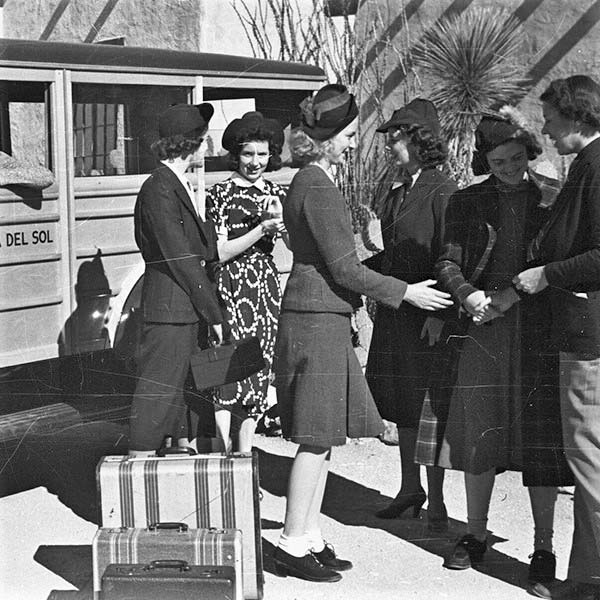 |
In 1929, John and Helen Murphey created Hacienda del Sol, a desert oasis and “home-away-from-home” ranch school for girls. Inspired by early Spanish colonial-style architecture, the school contained many outstanding structural details that the Murpheys constructed themselves. The school offered a college preparatory curriculum for adolescent women, as well as an array of outdoor activities that captured the essence of the Old American West. These extracurricular programs specifically focused on equine sports, with the school providing space to house any personal horses of their students. The climate, culture, and scholastic appeal of Hacienda del Sol was great and many prominent American families sent their daughters to the school. Indeed, the school’s student body featured illustrious surnames like Westinghouse, Pillsbury, Kellogg, and Vanderbilt. A granddaughter of former U.S. President Woodrow Wilson even attended Hacienda del Sol. Nevertheless, the academy had to shutter its operations during World War II and struggled to stay open once the conflict ended. The Murpheys thus reluctantly sold the site to Howard Morgan for a sum of $110,000. But the Morgans would prove to be wonderful stewards, spending thousands of dollars on refurbishing the remarkable estate into a resort called the “Hacienda Del Sol Hotel.” Now known as the Hacienda Del Sol Guest Ranch Resort, this spectacular holiday destination has become one of the best vacation spots in the American Southwest. Hacienda Del Sol Guest Ranch Resort is also committed to preserving its heritage as an all-girls academy, taking great pains to maintain its collection of artifacts and memorabilia. Hacienda Del Sol Guest Ranch Resort was inducted into Historic Hotels of America in 2009. |
Santa Fe, New Mexico
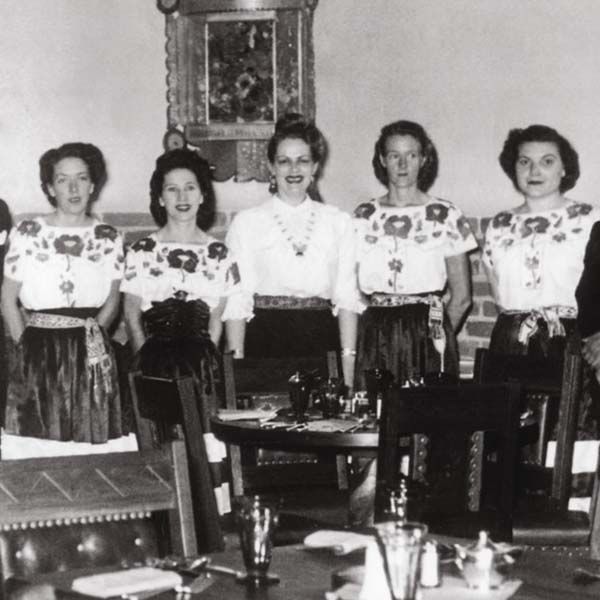 |
La Fonda on the Plaza™ in Santa Fe, New Mexico is a beloved landmark of Southwestern hospitality, and was the earliest and best-known hotel in America’s oldest capital city. Dating to 1922, the hotel was inducted into Historic Hotels of America in 1991, and is proud to celebrate its connections to women’s history as a one-time hotel and restaurant of the Fred Harvey Company. Mary Elizabeth Jane Colter, a noteworthy figure in the architectural history of the Southwest, was the principal architect and interior designer for the Fred Harvey Company from 1902 to 1948. One of the most visionary architects and interior designers of her time, Colter was a trailblazer in what was traditionally a male-dominated industry. Not only did she set the tone for the interior of La Fonda, but she served as one of the guiding forces behind National Park Service Rustic-style architecture, believing that a building should grow organically out of its environment. Today, you can see both her vision and authentic elements of the American Southwest in La Fonda’s hand-hewn beams, hammered-tin chandeliers, painted headboards, and terracotta tiles, each crafted by local artisans. Many visitors who stayed in Fred Harvey Company hotels like La Fonda may not have known of Colter, but they certainly knew the “Harvey Girls” who worked there. Employed throughout the Fred Harvey Company’s nationwide-wide chain, Harvey Girls had to be between the ages of 18-20 and of ‘good character’—they had to sign a contract to stay in the job for one year. Typically, Harvey Girls were housed in dormitories and watched by a “housemother.” Called by the promise of adventure and decent wages, young women from the East and Midwest made their way West to restaurants and hotels like La Fonda, providing guests with impeccable service and good food. |
Washington, DC
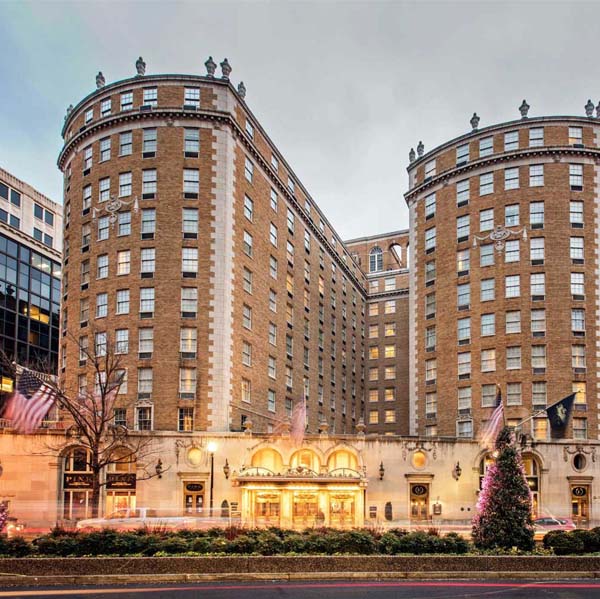 |
Women’s aviation history was made at The Mayflower Hotel, Autograph Collection in 1955, when the world’s first female helicopter pilots from France, Germany, and the United States met in Washington, DC, to form the “Whirly-Girls.” The women “founded the Whirly-Girls in hopes of developing an organization where female pilots could share information and camaraderie regardless of country, race, religion, or politics.” Their first meeting (or as they called them, their first “hovering”) was held on The Mayflower Hotel’s mezzanine. The pilots borrowed a typewriter and Mayflower stationery from the hotel to draft their bylaws. Pilots at the first “hovering” included French Army neurosurgeon and pilot Dr. Valérie André, and Americans Edna Gardner Whyte and Jean Ross Howard. Howard organized the first “hovering” and became the Whirly-Girls' first president. Whyte is notable for training military pilots after being denied access to flying as a military pilot. She was also one of two women in history to fly an early autogyro, a predecessor of the helicopter; the second woman with that distinction was Amelia Earhart. Earhart, who had long disappeared by the time of the Whirly-Girls' “hovering,” had also once been a visitor at The Mayflower Hotel. Following her 1932 solo flight from Newfoundland to the British Isles, Amelia Earhart posed for photographs in The Mayflower Suite before she received the Special Gold Medal of the National Geographic Society from President Herbert Hoover. |
“Historic Hotels of America is proud to preserve and tell the stories of women who lived, worked, and visited the historic hotels that travelers can experience today. Within the Historic Hotels of America, some hotels were once occupied entirely by women or girls, as schools or as women-only hotels. Several notable historic hotels have been operated by women, may have once been the site of a protest or political organizing by a woman or groups of women, and were even designed by pioneering women artists and architects, the firsts or few of their gender in the professional fields of design and engineering at the time,” Lawrence P. Horwitz, Executive Vice President of Historic Hotels of America and Historic Hotels Worldwide. “We invite travelers to be inspired to visit historic hotels to learn more about these compelling and remarkable women that made history at Historic Hotels of America. Truly, the history of these legendary hotels in the United States is women’s history.”
Read more:
The 2023 Top 25 Historic Hotels of America Most Magnificent Art Collections
2023 Top 25 Historic Hotels of America Most Historic Golf Courses
The 2023 Top 25 Historic Hotels of America Most Magnificent Ceilings and Domes
The 2023 Top 25 Historic Hotels of America Most Magnificent Gardens
The 2023 Top 25 Historic Hotels of America Where Women Made History
The 2023 Top 25 Historic Hotels of America in Film and Television History
The 2023 Historic Hotels of America Top 25 Afternoon Teas





















